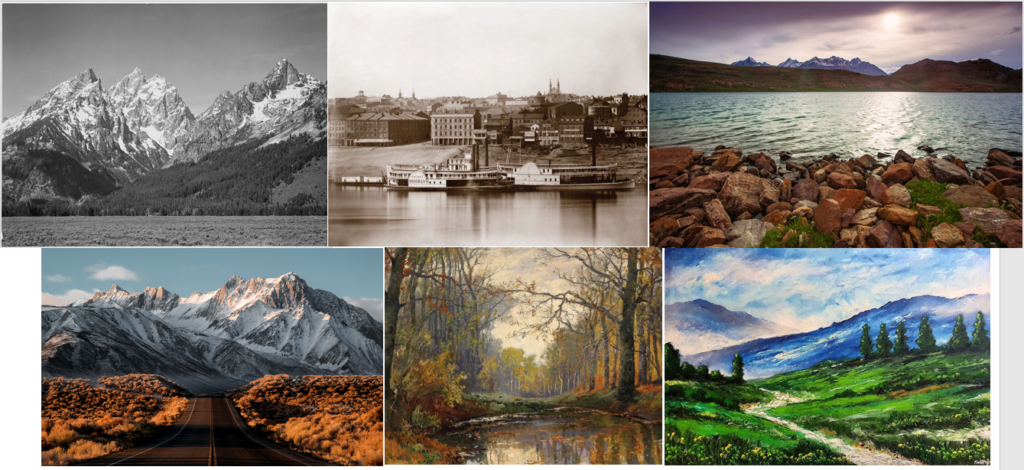
What does Landscape mean?
A landscape is defined as all the visible features of an area of land, often considered in terms of their aesthetic appeal. The term Landscape originates from the Dutch word landschap which originally meant ‘region, tract of land’ but then took on an artistic meaning of ‘a picture depicting scenery on land’ in the early 1500s.
In Giovanni Bellini’s painting, St Jerome in the wilderness, 1460, St Jerome is the focus of the image. This picture wouldn’t make sense without a landscape background, but the artist has explored this area in very little detail, keeping all the attention on the religious story.

When did Landscape emerge as a genre?
Before the renaissance in the 16th century, Landscape wasn’t really recognised as a genre in its own right, it was more a background to other genres. In the 17th century, classical landscapes started coming into light. However, it was still low down on the genre hierarchy. These landscapes were sought to illustrate an ideal landscape, recalling Arcadia which is a legendary place in ancient Greece known for its quiet pastoral beauty.
In the 18th century it became more accepted by the academy and in the 18th, early 19th century we start to see more landscape art coming about as a result of the industrial revolution.
